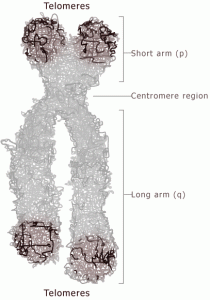Clinical research presentations at 2016 American Heart Association Scientific Sessions: telomeres + circulating progenitor cells, food deserts, and troponin as risk marker for atrial fibrillation.
Telomere Shortening, Regenerative Capacity, and Cardiovascular Outcomes Nov. 13, 4:45 pm, Room 346-347
Aging, in general, depletes our bodies’ regenerative capacities. Arshed Quyyumi, MD and colleagues at Emory Clinical Cardiovascular Research Institute have shown how circulating progenitor cells or CPCs, which regenerate blood vessels and correlate with outcomes in cardiovascular disease, are a finite resource.
Working with Quyyumi, research fellow Muhammad Hammadah, MD is presenting data on how telomere length interacts with the levels of CPCs, in a study of mental stress ischemia in 566 patients with stable coronary artery disease. Telomeres tend to shorten with ageing and cellular stress, and their length has been a widely studied biomarker.
Hammadah concludes that low leukocyte telomere length is associated with decreased regenerative capacity, independently of age and cardiovascular risk factors. However, telomere length and CPC levels are independent and additive predictors of adverse cardiovascular outcomes (such as death, heart attack, stroke, or hospitalization for heart failure), he finds. Hammadah is a finalist for the Elizabeth Barrett-Connor Research Award for Young Investigators in Training. Read more






